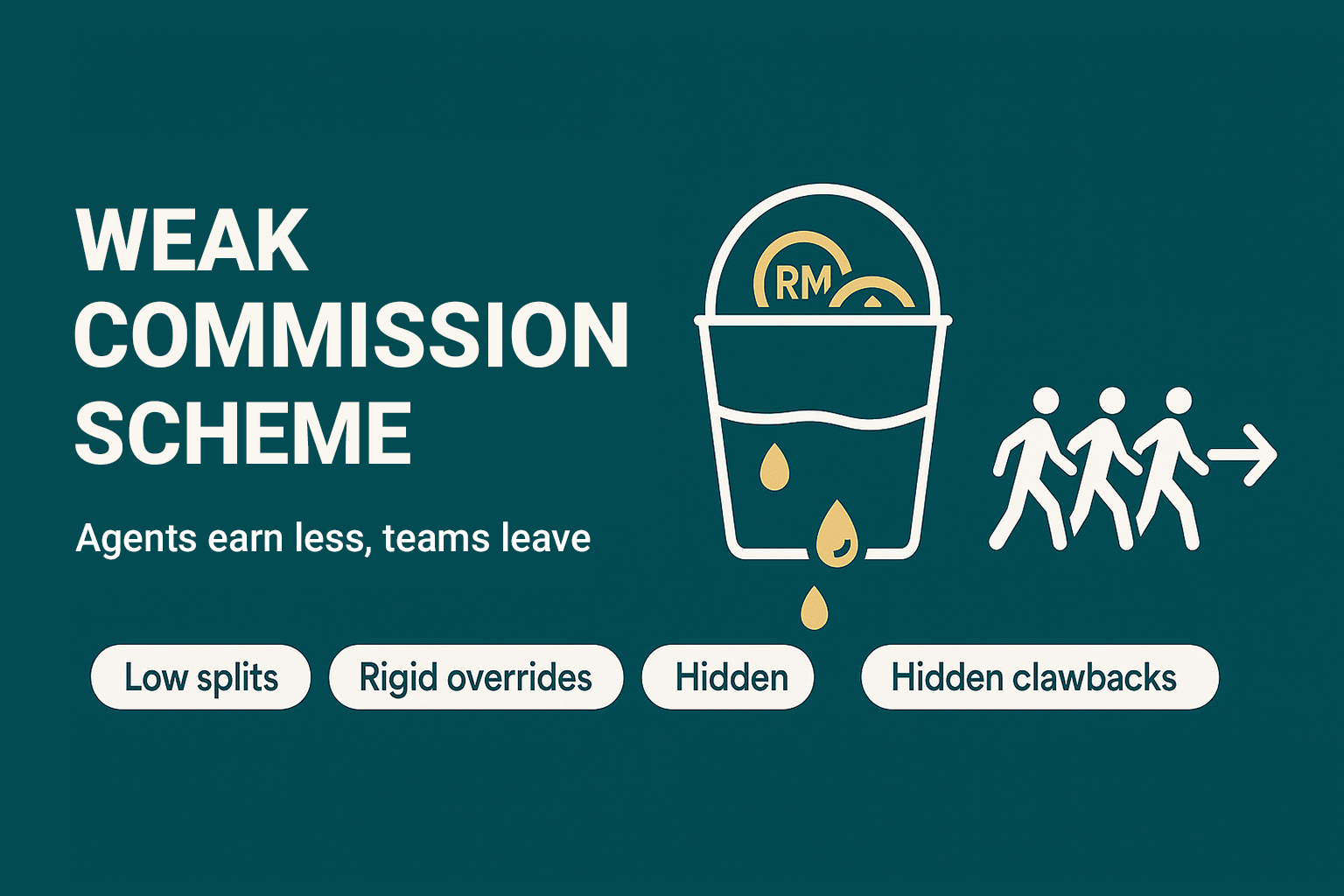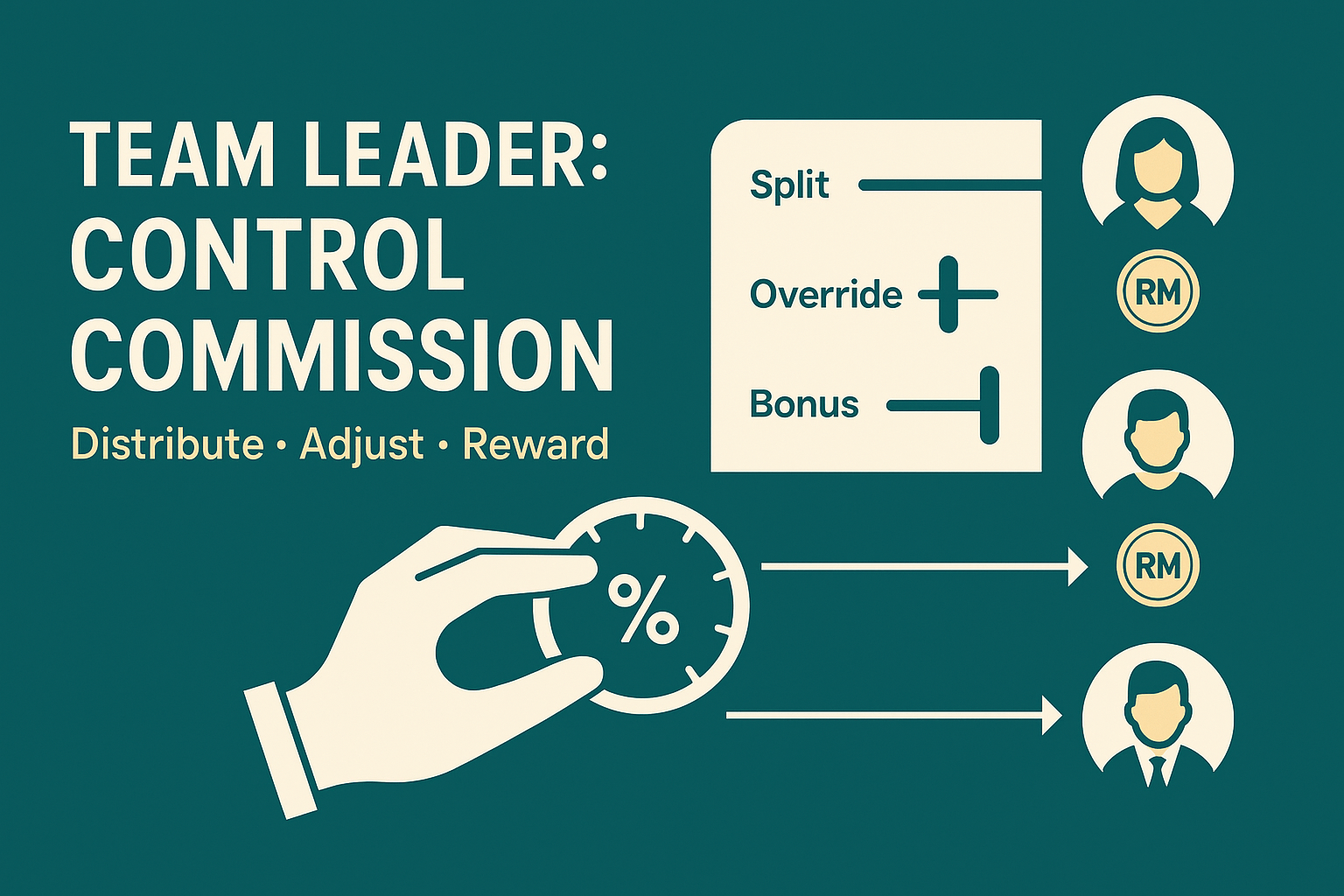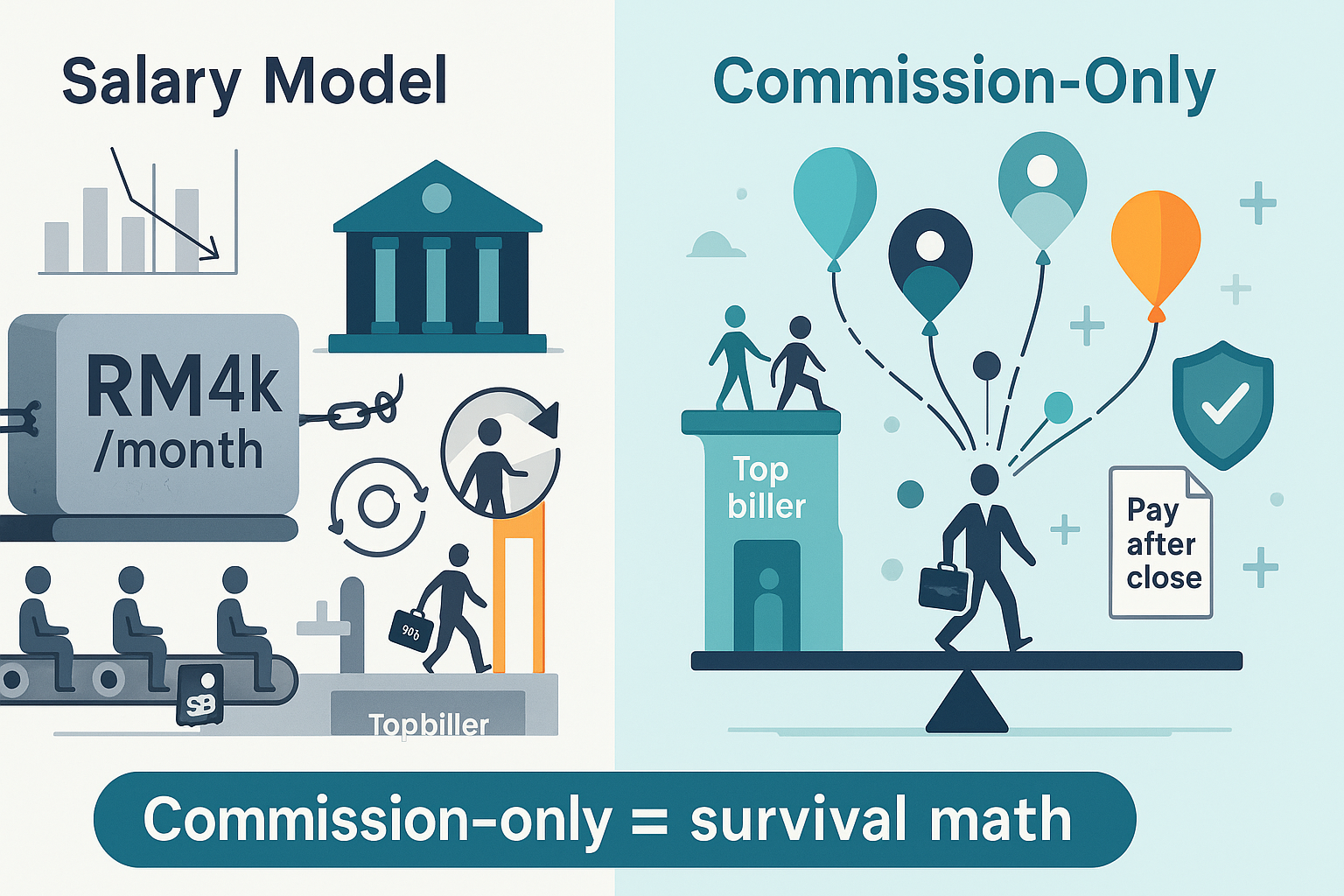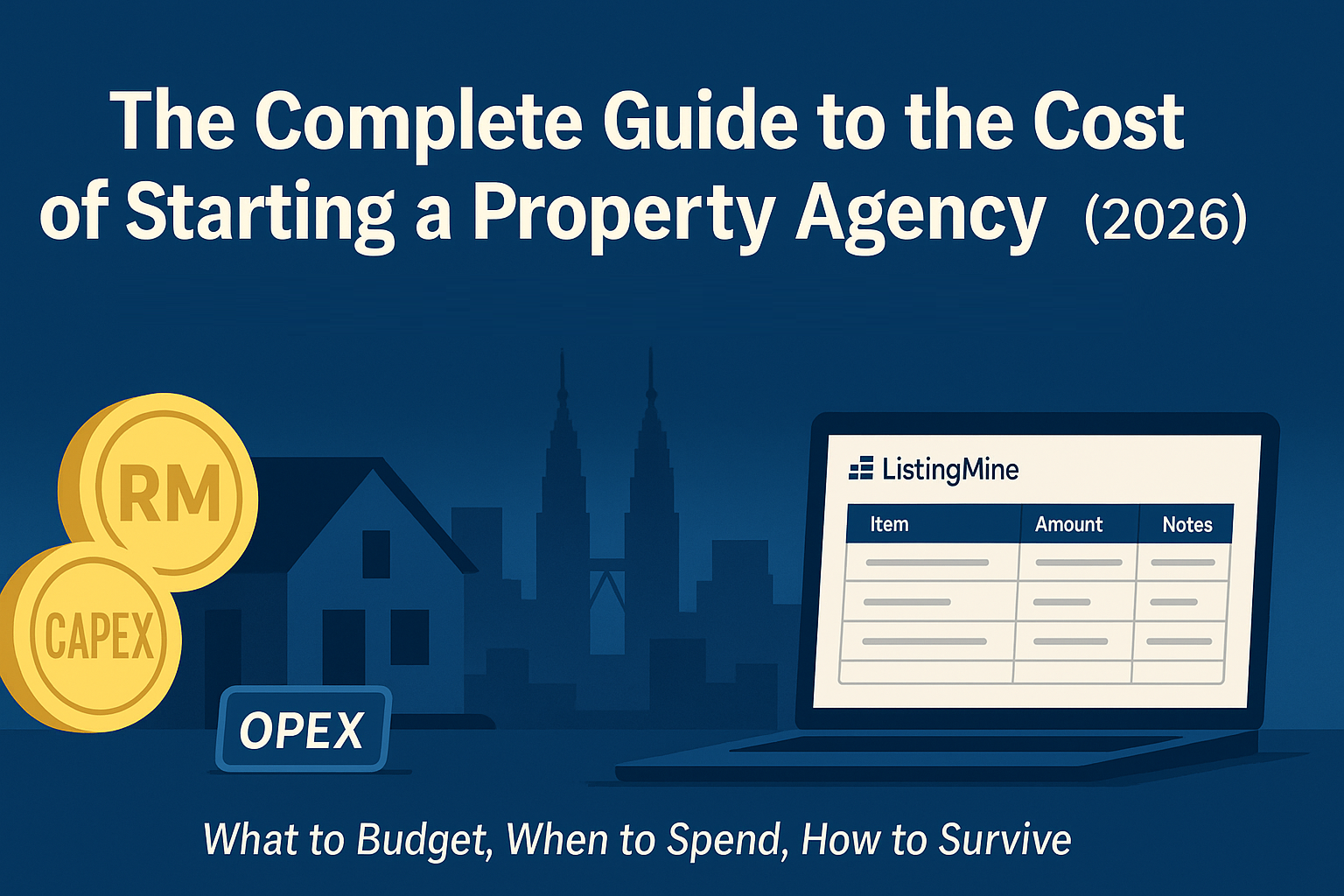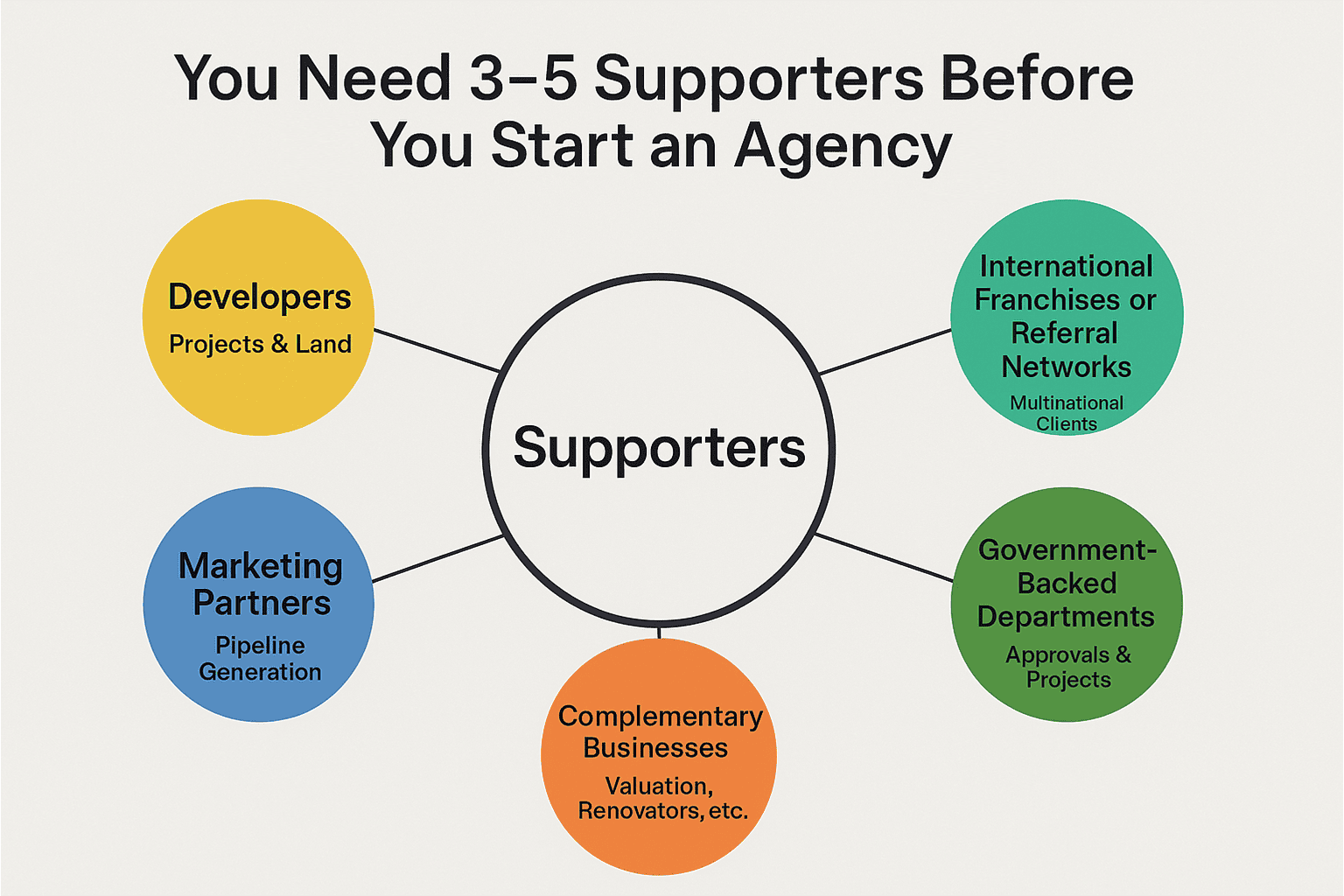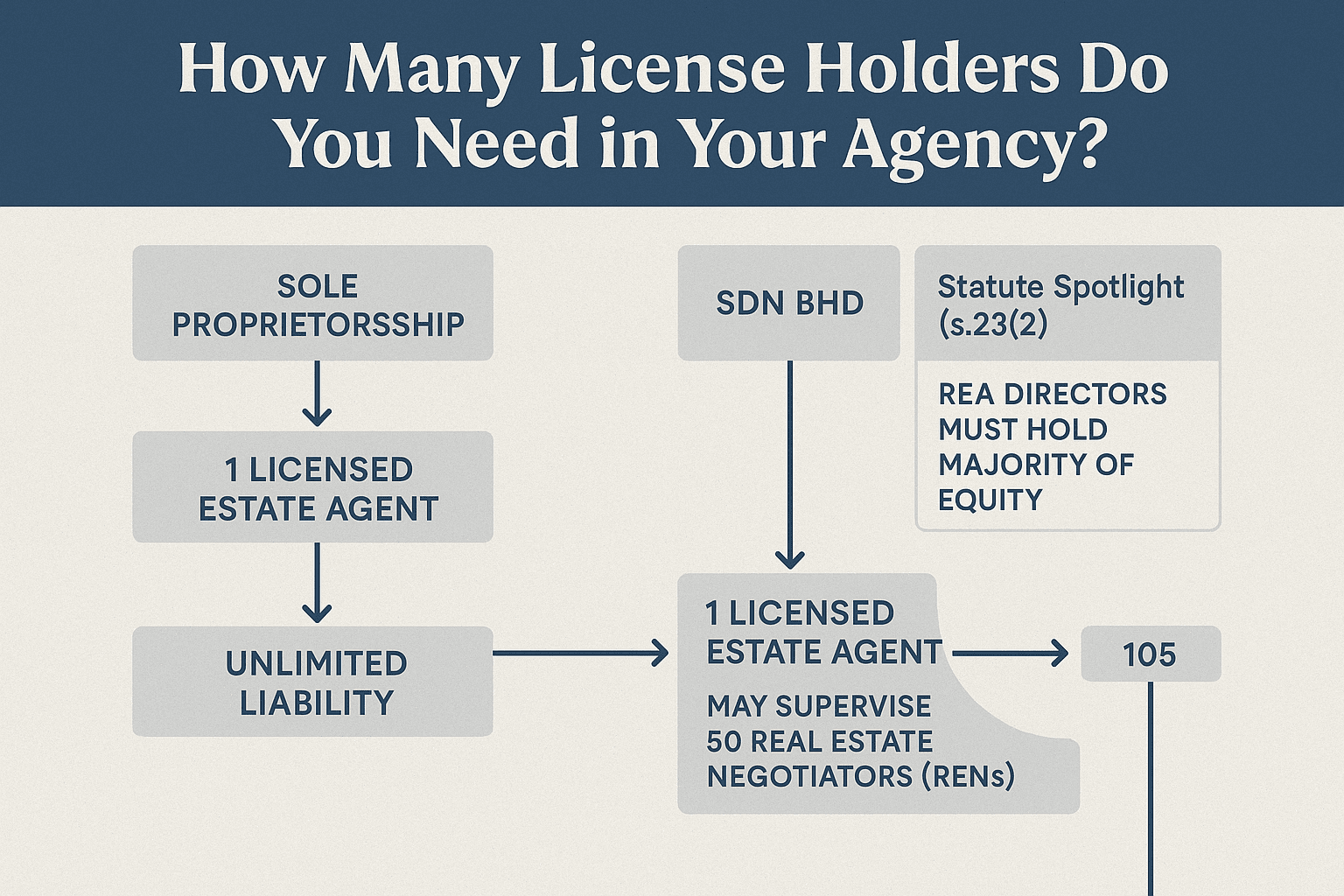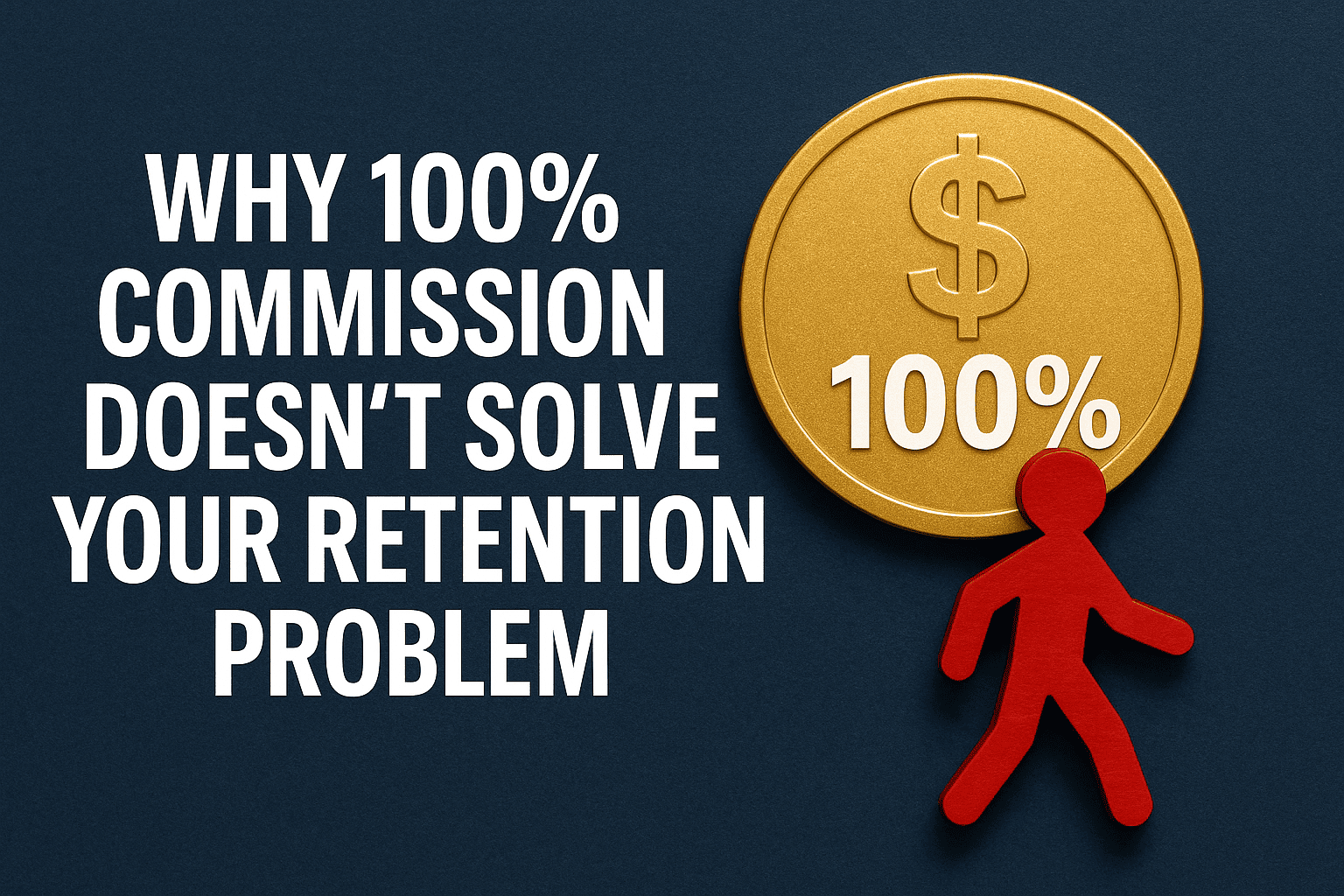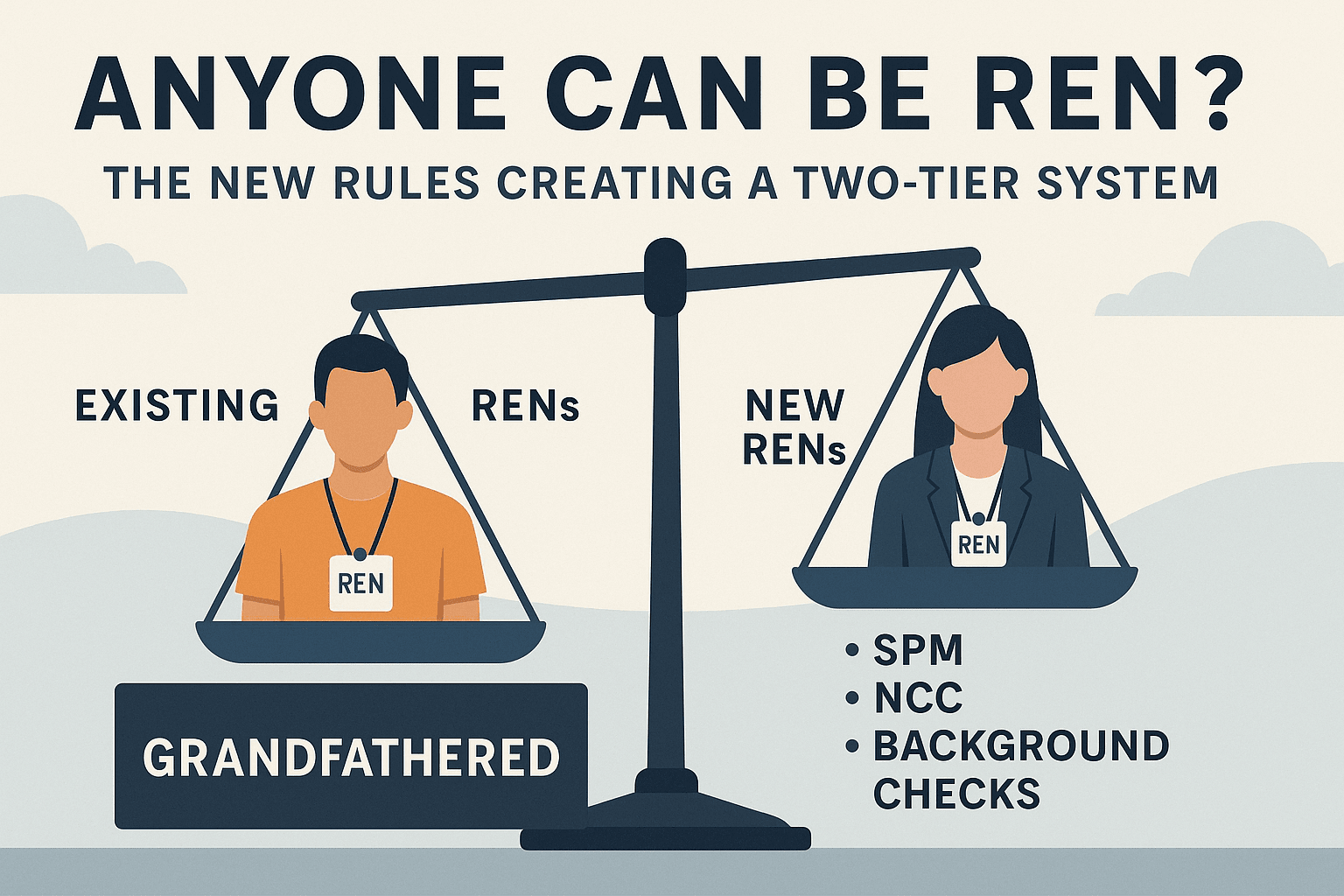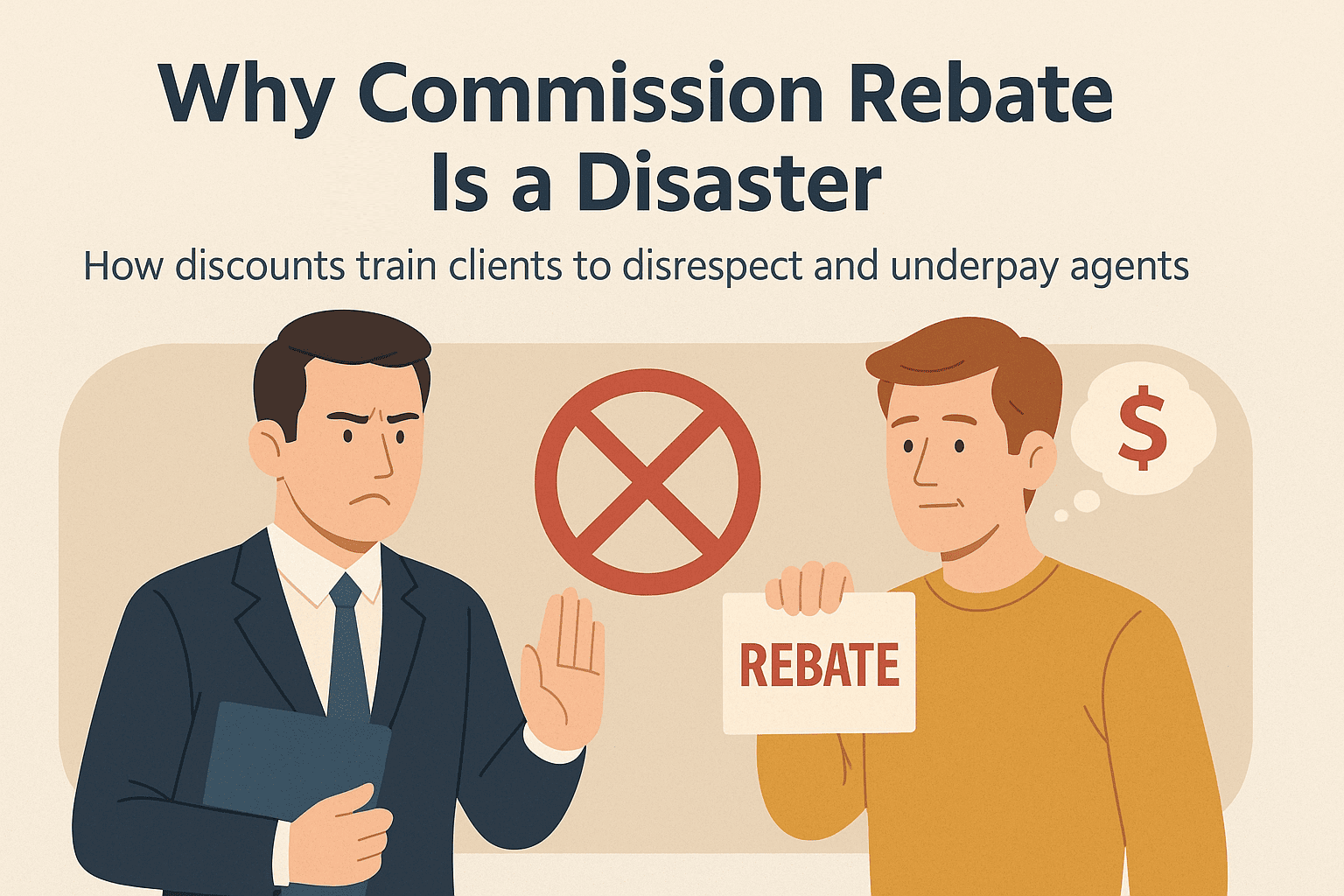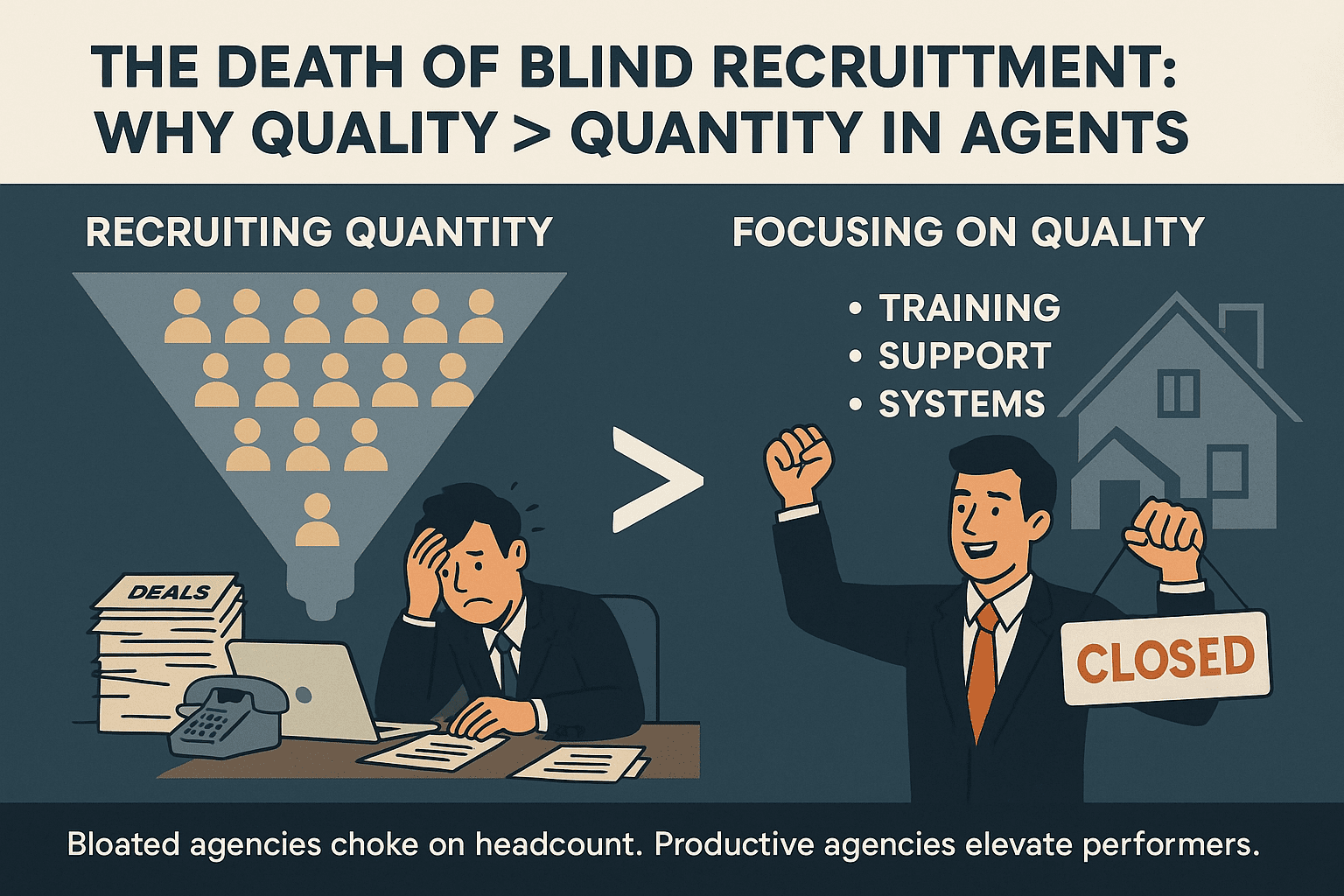Do We Really Need More Property Agents?

Every few months, the same debate resurfaces: Are there too many property agents in Malaysia?
It’s a valid question — especially when compared with Singapore, where 36,000 agents serve 6 million people, versus 60,000 agents serving 34 million in Malaysia.
On paper, Malaysia’s density seems low.
But dig deeper, and the question changes from “Do we have enough agents?” to “Do we have enough effective, full-time professionals?”
1. What the Numbers Really Show
| Metric | Singapore | Malaysia |
|---|---|---|
| Agents (Total) | 36,058 (CEA-registered) | 60,617 (REA + REN, BOVAEP) |
| Population (2025 est.) | 6.11 million | 34.2 million |
| Land Area | 734 km² | 330,803 km² |
| Agent Density (per 1,000 people) | ≈ 5.9 | ≈ 1.77 |
| Annual Transactions (est.) | ≈ 72,000 | ≈ 380,000 |
| Theoretical Transactions per Agent | ≈ 2.0 | ≈ 6.3 |
If Singapore agents can survive with two closings a year, theoretically Malaysian agents — with access to 6.3 potential deals per year — should be thriving.
But they aren’t.
The reason isn’t the number of agents. It’s the structure, distribution, and quality behind those numbers.
2. The Gig Economy Effect: Not Every Agent Is a Full-Time Agent
A large portion of Malaysia’s 60,000+ registered agents are part-timers.
They treat property sales as a side income — doing viewings on weekends, assisting friends, or chasing occasional referrals.
This inflates the official statistics but distorts the real workforce.
When half the industry treats agency work as a gig, the average productivity per agent inevitably looks weaker — not because of lack of demand, but lack of commitment.
In short: Malaysia doesn’t have too few agents; it has too few career professionals.
3. The Efficiency Problem, Not the Headcount Problem
Malaysia’s inefficiencies kill productivity long before new agents can make a difference:
- Unverified listings lead to duplicated efforts.
- Weak co-broking systems create mistrust and non-transparent commission sharing.
- Long approval timelines (especially for loans) destroy closing momentum.
Until these fundamentals improve, every additional agent simply joins the same traffic jam.
More cars on the highway don’t fix congestion — better roads do.
4. The Tech Shift: From More Agents to Tech-Enabled Agents
PropTech platforms are already addressing these inefficiencies head-on:
- Centralized listing databases to cut duplication.
- Digital transaction management for smoother cross-agency deals.
- Commission tracking systems to ensure transparent payments.
The next wave isn’t about hiring more people — it’s about building tech-empowered agents who can handle three times the volume with half the friction.
Platforms like ListingMine’s ACN (Agent Cooperation Network) exemplify this: a role-based, event-verified co-broking system that automates splits, tracks proof of contribution, and rewards agents fairly.
The industry doesn’t need more hands — it needs smarter tools.
5. Urban Oversupply vs. Rural Undersupply
Malaysia’s geography makes the picture uneven:
Cities like Kuala Lumpur, Penang, and Johor Bahru are oversaturated, with multiple agents chasing the same listings.
Secondary and rural areas remain underrepresented, leaving many owners and buyers without professional support.
The challenge isn’t how many agents Malaysia has — it’s where they are and how they work.
6. The Consumer Cost: When Oversupply Meets Inefficiency
The current imbalance affects not just agents, but consumers:
- Information Overload – The same listing appears under ten agents, confusing buyers.
- Inconsistent Service Quality – Some agents provide market research; others can’t explain legal basics.
- Trust Erosion – Illegal or untrained agents undermine the reputation of the entire industry.
Consumers start distrusting everyone — even the good professionals.
7. Illegal Agents: The Shadow Market
Malaysia’s real agent population is likely far higher than official data suggests, due to thousands of unregistered brokers operating under the radar.
They distort pricing, steal leads, and often undercut legitimate agents.
Singapore’s CEA regulation leaves almost no space for such grey-market activity, ensuring that every transaction is traceable and compliant.
Malaysia’s scale and enforcement inconsistency make that much harder — especially outside major cities.
8. The Bottom Line: Quality Over Quantity
Malaysia doesn’t need more agents — it needs better ones.
If Singapore agents can survive on two deals a year, Malaysian agents with access to six should be thriving.
The missing link isn’t headcount; it’s structure, professionalism, and technology.
The future belongs to agents who can work smarter, faster, and together — not merely more of them.
Sources (compiled)
- Council for Estate Agencies (CEA, Singapore) – Key Industry Statistics 2025
- Department of Statistics Malaysia (DOSM) – Current Population Estimates 2025
- BOVAEP / Planning Malaysia Journal (2024) – Registered REN & REA Data
- NAPIC (National Property Information Centre) – Property Market Report 2024
- ListingMine Research – Agent Density & Transaction Volume Analysis
Disclaimer
Data above are compiled from public sources for analytical and educational discussion.
Figures may differ depending on reporting methods and enforcement coverage.
The presence of part-time and illegal agents can distort actual productivity metrics.
This article is for educational insight only, not investment or legal advice.



